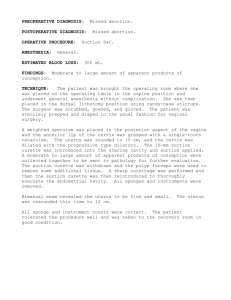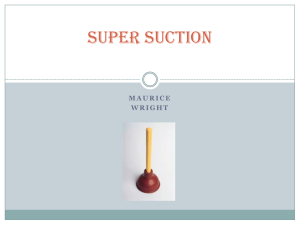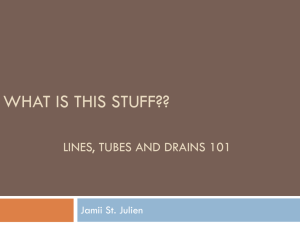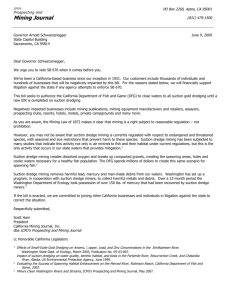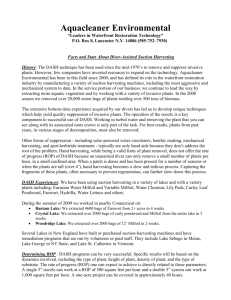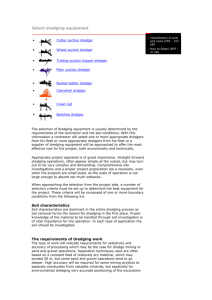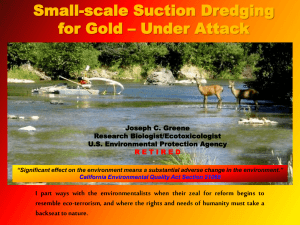Suction Harvesting Myth vs Methodology
advertisement
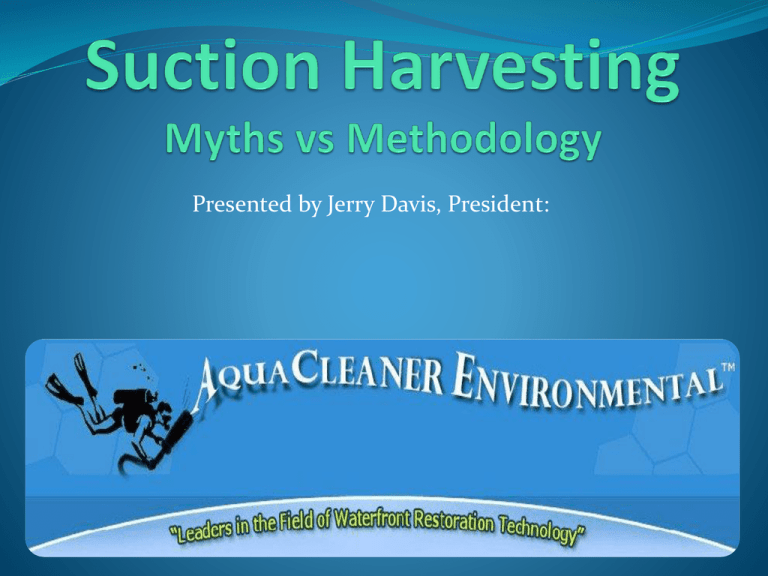
Presented by Jerry Davis, President: *Involved in Suction Harvesting Since 1998 *Founded Aquacleaners in 2000 *Developed numerous variations of DASH BOATS *Developed Operational Protocols for SH in NYS *Removed over 500 Tons of Aquatic Vegetation in 1 season Suction harvesting AKA, “DASH”, is the extraction of plants using a diver, suction tube, unique set of pumps mounted on a boat, and a bagging or filtration system. The system is used to remove invasive, annoying, and overrun plants by the rooting system as well past year’s plants lying on the bottom in various forms of decomposition. Suction harvesting is a viable means of plant suppression, as you are removing the entire plant in its connective rooting system. The diver dredging procedure is a mechanical control technology that was pioneered by the British Columbia Ministry of Environment after Eurasian water milfoil invaded its waterways in the early 1970s. Diver dredging is especially effective against pioneering infestations of submersed invasive plant species. When a weed is discovered in a pioneering state, this methodology should be considered. Diver Vermont Maine New Hampshire Connecticut New York Washington Michigan Eurasian Milfoil Fan Wart Curley Pond Weed Lily Pads Water & Variable Brazilian Elodea Hydrilla Chara Removal of the existing plants and it’s associated rooting system is key for suppression. Rates of progress for suction harvesting can be determined once a better understanding of dynamics involved have been properly assessed, because each factor can have a major impact on just how big an area can be completed in a hour, day or week. Plant & Debris Removal Type of plant: The Rooting System of aquatic plants varies and dictates how fast we can remove this year’s plants. Tuber rooted plants like lily pads can significantly reduce productivity due to their size and structure. The Type of Bottom – Soft, silted in bottoms will make plant removal and it’s rooting system easier to extract. Hard bottoms like clay or sand will require more suction to get to the rooting system of the plant. The Density - Is a patch sparse or are patches thick. The Height of the Plants – The taller the plants is, the more time will be required to extract it in a given area because there is more bio mass. The difference between a 3’ and 12’ plant is 4 times the mass. The Depth of the Water is important because deeper water work will slow your rate of progress due to the logistics of moving around while under water. How Long Has The Patch Been Established – The longer the plants have been established, the more dead plants will be lying in the lakes bottom and the more mass and time to remove it Define The Other Types of debris in the area to be cleaned. Leafs, sticks, rocks, zebra mussels, and larger timber must be gone through as we clean an area and the thickness of these other types of debris will effect the rate of progress. Rate of Progress can vary from 50 square feet/hr (Tuber Rooted Plants) to 500 square feet/hr (Curly Pond Weed, Milfoil) depending on these characteristics *Invasive Plants *Rapid Response *Large Scale Projects *Over Run Aquatic Vegetation *Shoreline Remediation *Waterfront Homeowners Shoreline Remediation – The Removal of leaves, sticks, rocks and debris along from the shoreline and out into the lake. SUCTION DREDGING Bigger is not always Better Traditional Dredge Methods *Two Methods of Dredging: Excavation & Pumps *Dredging Was Designed to Deepen Waterways & Alter Bottom *Excavation is Imprecise, Messy, Logistically Challenging *Large Pumps Need Space To De Water, Large Set Up Costs *Permitting Can be Problematic *Small Scale Projects More Costly *Large Disruption in the Water & Upland *Harder to Contain Turbidity *Tougher To Work Close To Shore & Around Docks An Extension of Suction Harvesting removing the Accumulated Organic Sediment *Diver Operates Nozzle Under the Water •Low Short Term Impact in the Water •Low Short Term Impact Up Land •Minimum Disruption During Project •Can Reclaim the Natural Bottom •A Green Alternative vs Traditional Dredging •Minimal Set Up & Break Down Dirty Dredger For Removal of Plants & Sediment Slurry Is Pumped To Shore Where the Material is Separated Components & Benefits •Hay Bail Containment Area •Liner is Placed Underneath the Bag •Filtration Material is Placed Inside Hay •De-Watering Bag is Placed Inside Burm •Return Water is Managed so to Minimize Disruption •Material Remains in Bag Till Dry •No Smell •Bag Sized to Fit Project & Space
